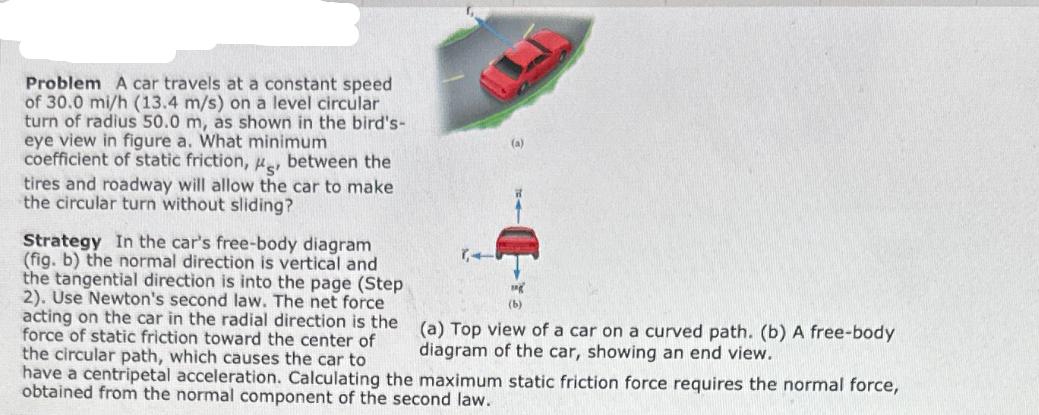Answered step by step
Verified Expert Solution
Question
1 Approved Answer
Problem A car travels at a constant speed of 30.0 mi/h (13.4 m/s) on a level circular turn of radius 50.0 m, as shown

Problem A car travels at a constant speed of 30.0 mi/h (13.4 m/s) on a level circular turn of radius 50.0 m, as shown in the bird's- eye view in figure a. What minimum coefficient of static friction, , between the tires and roadway will allow the car to make the circular turn without sliding? Strategy In the car's free-body diagram (fig. b) the normal direction is vertical and the tangential direction is into the page (Step 2). Use Newton's second law. The net force acting on the car in the radial direction is the force of static friction toward the center of the circular path, which causes the car to (a) (b) (a) Top view of a car on a curved path. (b) A free-body diagram of the car, showing an end view. have a centripetal acceleration. Calculating the maximum static friction force requires the normal force, obtained from the normal component of the second law.
Step by Step Solution
There are 3 Steps involved in it
Step: 1

Get Instant Access to Expert-Tailored Solutions
See step-by-step solutions with expert insights and AI powered tools for academic success
Step: 2

Step: 3

Ace Your Homework with AI
Get the answers you need in no time with our AI-driven, step-by-step assistance
Get Started


